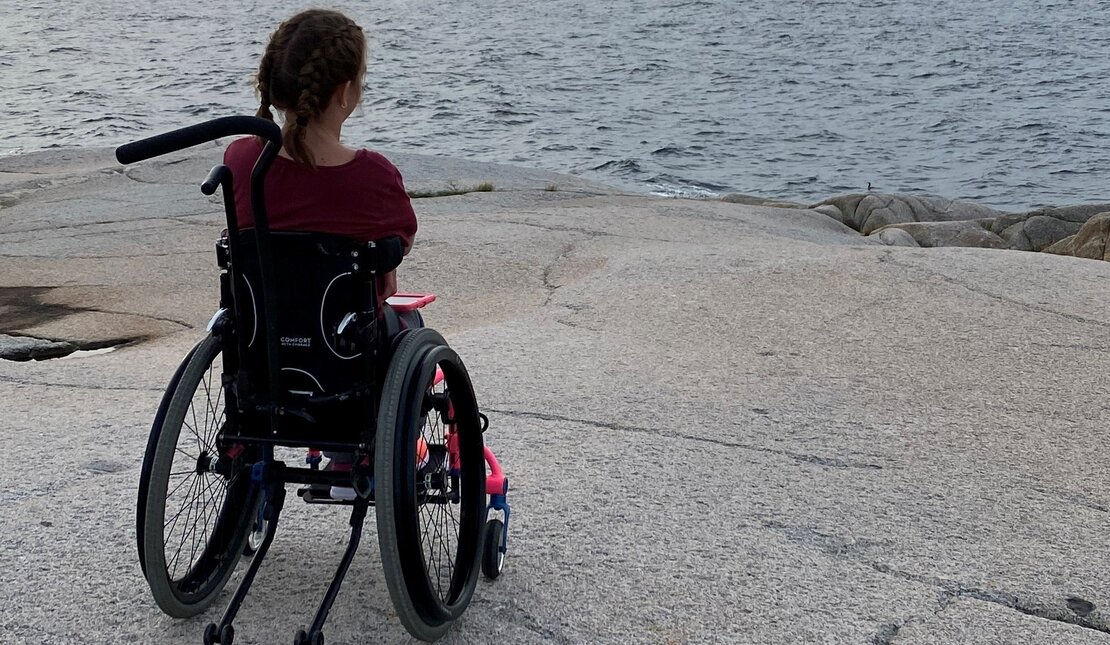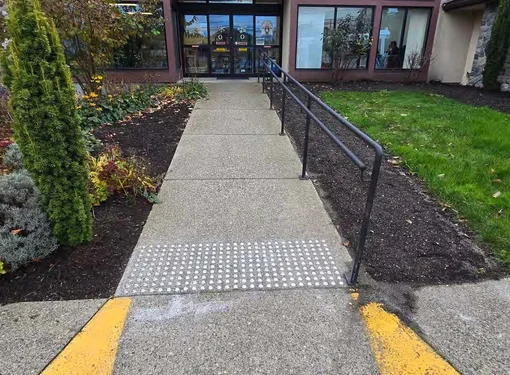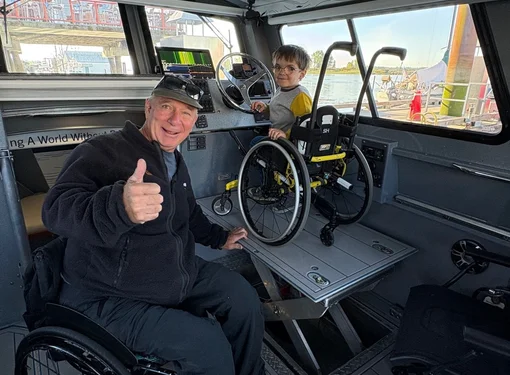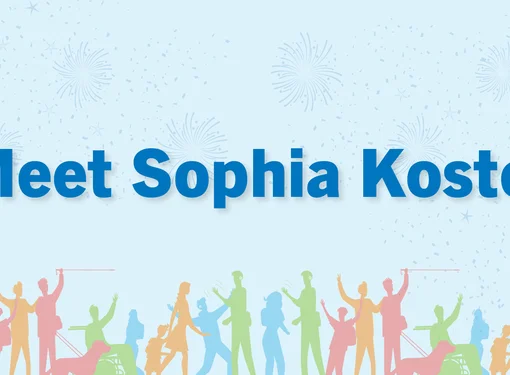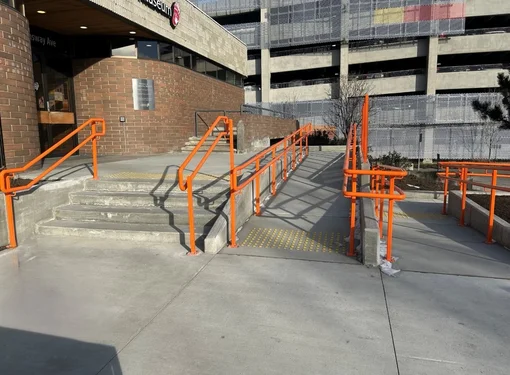Living with Cerebral Palsy: Teenager, Payton Given, Advocates for Accessibility for All
Payton Given, 15, fights for access every day. She lives with Cerebral Palsy and uses a wheelchair to navigate the world around her – but there are so many barriers to allowing her to live her life fully.
Le francais suit l'anglais
March is national Cerebral Palsy Awareness Month, with national Cerebral Palsy Awareness Day falling on March 25th. This is an opportunity to learn more about the most common childhood physical disability in North America.
“The world doesn't know much about Cerebral Palsy,” Payton said. “I work very hard to try and educate people, to raise awareness.”
What is Cerebral Palsy?
Cerebral Palsy refers to a group of disorders that affect the development of motor control and function. It results from damage to the brain. Cerebral Palsy can affect anything from posture, movement, coordination, muscle tone, and balance, among other symptoms.
Like many disabilities, Cerebral Palsy is not experienced the same by any two individuals, symptoms and severity can range from minimal to significant, drastically changing the way it appears or how an individual navigates the world around them.
“It’s a spectrum. I know people who can walk, and some who can't talk,” Payton said. “There is no education about the spectrum of Cerebral Palsy that I’ve come across here in Nova Scotia.”
Full Participation in Life
At 15, Payton is a high school student who just wants to be able to go out and enjoy the world around her.
“I’ve gone surfing and ziplining in my wheelchair,” she explained with a smile. “I have a racing wheelchair. There’s a lot of accessible things that people don’t know about. There are so many opportunities.”
Payton has sought out these great experiences, but day to day, she struggles to access the one place most teenagers spend their days – her high school.
“Right now, I go to school in a powered wheelchair. At my school it’s hard to go over bumps and the doors are not aligned with the curbs,” she noted. “The buttons on the automatic door don’t work so if I don’t have someone to open a door for me, it’s a problem.”
Payton has sought out wonderful experiences, but they are not readily available.
“As a disabled person things don’t come to you, you go to them. I have to fight for everything I do.”
Creating Awareness for All
‘I advocate so hard for things to be accessible,” she explained. “I don’t just advocate for me, but I advocate for the people of tomorrow.”
Payton works hard to raise awareness and educate others about Cerebral Palsy and accessibility. She also has a wonderful support system behind her who help her on her advocacy journey including her dad and her mentors.
“I just want for anybody who has Cerebral Palsy to know they’re not alone and there are people out there like them. They will find their people,” she said. “They will find their support system.”
Cerebral Palsy affects nearly one million people in the United States and Canada. Creating an accessible world where, regardless of mobility, everyone can navigate the world and go to all the places where we live, work and play.
“Accessibility means for me to, in any shape or form, be able to join my friends, my family, my support team where they are. It doesn’t matter to me if I can’t do everything I just want to be there,” Payton said. “I see you, I hear you, you’re doing great – no matter if you’re rolling, walking, or crawling.”
Le français
Vivre avec la paralysie cérébrale : L’ado Payton Given milite en faveur de l’accessibilité pour tout le monde
Payton Given, 15 ans, lutte pour l’accessibilité tous les jours. Elle vit avec la paralysie cérébrale et utilise un fauteuil roulant pour se déplacer dans son environnement – mais il y a de nombreux obstacles qui l’empêchent de vivre pleinement sa vie.
Mars est le Mois national de sensibilisation à la paralysie cérébrale, et on célèbre le 25 mars la Journée nationale de sensibilisation à la paralysie cérébrale. Il s’agit d’une occasion d’en apprendre davantage sur le handicap physique le plus fréquent chez les enfants d’Amérique du Nord.
« Le monde ne sait pas vraiment ce qu’est la paralysie cérébrale », explique Payton. « Je m’efforce d’éduquer les gens et d’accroître la sensibilisation. »
Qu’est-ce que la paralysie cérébrale?
Le terme « paralysie cérébrale » désigne un groupe de troubles qui touchent principalement le développement du contrôle de la motricité et de la fonction motrice. C’est le résultat de dommages au cerveau. La paralysie cérébrale peut avoir divers symptômes, y compris une incidence sur la posture, le mouvement, la coordination, le tonus musculaire et l’équilibre.
Comme bien d’autres handicaps, la paralysie cérébrale se vit différemment selon la personne; les symptômes et la gravité peuvent varier de minimes à considérables, changer drastiquement d’apparence ou modifier la façon dont une personne navigue le monde qui l’entoure.
« C’est un spectre. Je connais des personnes qui peuvent marcher et d’autres qui ne peuvent pas parler », poursuit Payton. « Je n’ai jamais vu d’information au sujet du spectre de la paralysie cérébrale ici, en Nouvelle-Écosse. »
Participer pleinement à la vie
À 15 ans, Payton est une élève du secondaire qui veut simplement pouvoir sortir et profiter du monde qui l’entoure.
« J’ai déjà fait du surf et de la tyrolienne dans mon fauteuil roulant », ajoute-t-elle en souriant. « J’ai aussi un fauteuil roulant de course. Il y a beaucoup d’activités accessibles que les gens ne connaissent pas. Il y a tellement de possibilités. »
Payton recherche de belles expériences, mais au quotidien, elle a de la difficulté à accéder à l’endroit où la plupart des adolescents passent leurs journées – son école secondaire.
« Actuellement, pour aller à l’école, j’ai recours à un fauteuil roulant motorisé. À mon école, c’est difficile de rouler par-dessus les bosses et les portes ne sont pas alignées avec les bateaux de trottoirs », remarque-t-elle. « Les boutons des portes automatiques ne fonctionnent pas, donc c’est un problème s’il n’y a personne qui peut m’ouvrir la porte. »
Payton continue de chercher ces expériences extraordinaires, mais elles sont parfois difficiles à trouver.
« Comme personne en situation de handicap, je dois être proactive pour trouver les choses qui m’intéressent. Je dois me battre pour tout ce que je veux faire. »
Sensibiliser tout le monde
« Je travaille fort pour préconiser l’accessibilité », dit-elle. « Je ne milite pas que pour moi, mais pour le monde de demain. »
Payton travaille avec acharnement pour sensibiliser et éduquer les autres au sujet de la paralysie cérébrale et de l’accessibilité. Pour l’aider dans sa défense des intérêts, elle a une merveilleuse structure de soutien qui comprend son père et ses mentors.
« J’aimerais que toutes les personnes qui vivent avec la paralysie cérébrale sachent qu’elles ne sont pas seules et qu’il y a d’autres personnes comme elles. Il faut seulement les trouver », précise-t-elle. « Il faut se créer une structure de soutien. »
La paralysie cérébrale touche près d’un million de personnes aux États-Unis et au Canada. Créer un monde accessible dans lequel toutes les personnes peuvent naviguer pour se rendre aux endroits où elles vivent, travaillent et jouent, peu importe leurs capacités.
« L’accessibilité, pour moi, c’est de pouvoir accompagner, de quelque façon que ce soit, mes amis ou encore les membres de ma famille ou de mon équipe de soutien à l’endroit où ils sont. Ça ne me dérange pas si je ne peux pas tout faire, mais je veux au moins être présente », conclut Payton. « Je vous vois, je vous entends… vous êtes formidable – peu importe si vous vous déplacez en roulant, en marchant ou en rampant. »
